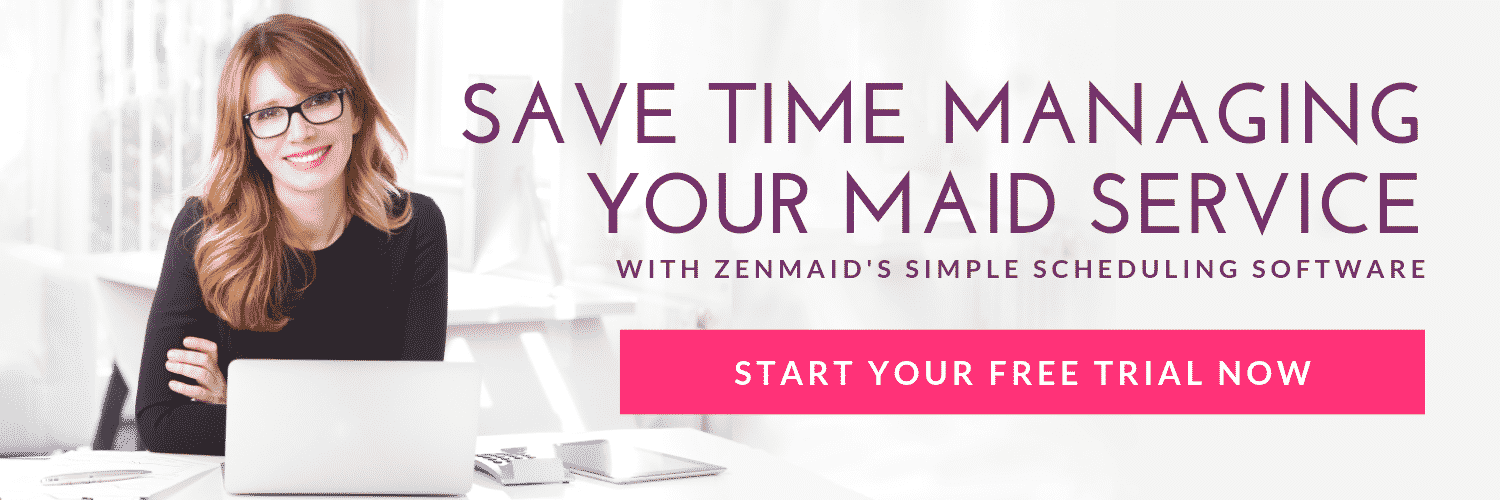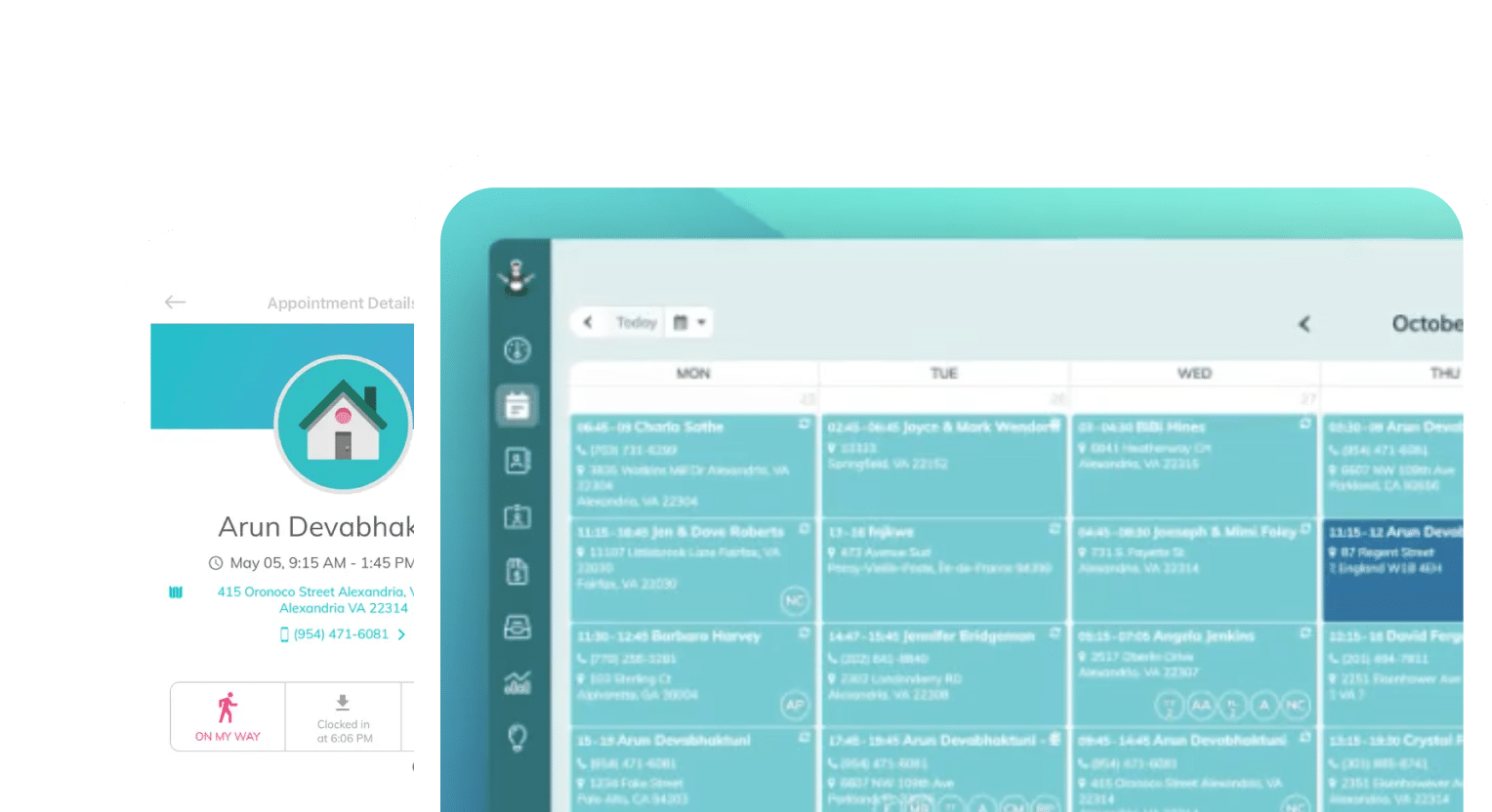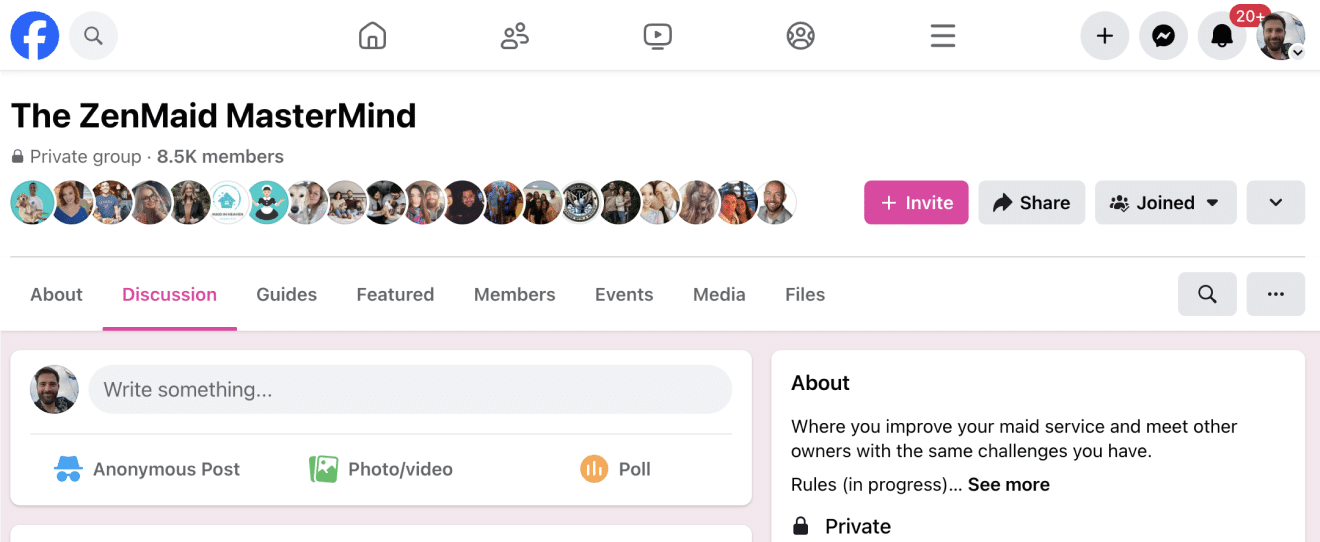As the world adapts to a new normal, businesses are doing what they can to adapt as well. This makes it the perfect time to try those marketing strategies that you’ve always thought about but never actually pursued.
One of the best things you can do for your maid service right now is investing in video marketing content. Video is growing to be one of the most effective marketing platforms out there.
In this post, we will share three things you need to know before getting started creating video content.
You’ll learn the importance of video marketing, just how big an impact it has on customers, and exactly how to get started using it for your maid service.
We’ll also show you how to gain new cleaning clients so that you can lock out your competition and dominate your target market.
Table of contents
Understanding the power of video marketing
Videos can help you solidify your brand by improving brand recognition among people in your area, as well as establish you as an expert and through leader in the industry.
When your audience sees you on video, they are able to connect with you on a more emotional level which can make a big impact on how they interact with your brand in the future.
A huge eighty-five percent of internet users in the United States watch video content every month. And while you may think that the internet is becoming oversaturated with video content, one study shows that 66% of consumers want to see more video content from brands that they support.

Seeing videos about your products or services helps your audience come to a decision more quickly about whether they want to commit to buying from you.
As brands continue to produce more videos, video content as a whole is slowly becoming consumers’ favorite way to consume information.
When watching videos, viewers retain 95% more information as opposed to reading the same information. This makes video marketing a really powerful tool when trying to educate your audience or catch their attention about the problem your cleaning business solves.
Videos also keep users engaged and on your website longer. In fact, the average user spends 88% more time on a website when watching video content.
While it is true that video marketing is time-consuming and can be costly if you hire someone else to do it for you, most marketers see a great return on investment when it comes to their videos.
Eighty percent of marketers report being satisfied with the ROI that they’re getting from their videos.
But we know it’s not always as easy as setting up a camera and hitting “record.” Let’s dive into some common blocks that business owners run into when they first start creating video content and how to overcome them.
Overcoming common video marketing roadblocks
Even though we know that customers love video, not many people, especially in the cleaning industry, are utilizing it.
It’s very likely that your competition are not making marketing videos.
The idea of making video content tends to make some people feel uncomfortable and requires them to learn a new skill that they may not be willing to learn.
Overcoming your mental blocks around creating video content can give you a considerable competitive edge over other businesses like yours. You are going to feel uncomfortable being on camera at first. You might find issues with the way that you look or dislike the way that you sound.
These are entirely normal feelings to have when it’s your first time being on camera. The important thing is not to let these feelings stop you from continuing with your plan to create.
It’s all part of the process. Once you go through the process a few times, you will get more comfortable with how you look and sound on camera. It’s a skill that takes time to perfect. The important thing is to continue to work through the discomfort. If you can do that, the payoff will be worth it.
Start where you are and keep working on it until you get better.
Create a video script that adds value to your audience
Now let’s get into actually creating the video. You might think that you need fancy equipment to create high-quality video content. That’s not true.
The most important thing you need to create good marketing videos is something valuable and important to say to your audience. This is where your script comes in. Having a solid script can make up for any of the other shortcomings you think you have, such as an average camera or microphone.
Let’s break down the script into three parts. You will need an introduction, the main value bomb, and a call to action or conclusion.
One of the hardest parts of the video is just getting it started. When you know how to introduce your video, the rest of the video will fall into place much more naturally.
Here’s a great example of an introduction that Pam uses in one of her videos:
“Hi, I’m Pam Washington from Fast Friendly Spotless Maid Services. During these important and uncertain times, many of our clients wonder how to keep themselves, their families, and their communities safe, clean, and comfortable.
Because Fast Friendly Spotless has 26 years of professional experience in the cleaning industry, I’m here today to let you know what we are doing as an ethical employer to make sure that we’re keeping our neighbors and our essential workers safe.
We want you to know that you can trust us to care for your family and your belongings during every cleaning.
Here’s a list of the three things you can expect from our cleaners if you book a cleaning during this pandemic.”
This is an example of one way you can introduce your video. Start by introducing yourself and then giving the viewer an understanding of what they are going to expect.
In this example, Pam made it clear who she was, what her businesses did, and what the video would be about. In this case, she shared the three things her maid service is doing to make sure they are responsible when working during the pandemic.
Next, go into detail about the main topic you mentioned in the video. Break it down into parts. As you’re making the video, verbally number the steps you’re saying to make it easier for the viewer to keep track of what you’ve covered. You can even add text or graphics to the video to help make the content more visual.
Lastly, add a conclusion or call to action. This can include mentioning your website where a customer can book a cleaning or get a free quote. Another option is to tell them where they can learn more about the topic you covered, such as on your blog or in another video you’ve made.
Your Cleaning Business Needs Video
It is important to stay at the forefront of your client’s mind – both as a partner and as a valuable resource. Don’t stop marketing just because you don’t think your customers are using cleaning services right now.
You want to stay in their minds until they are ready. By creating video content, you’re giving them something to think about and keeping them engaged so that when they are ready for your service, they’ll know who to call.
Now is a great time to make sure that your company is one of the leading voices in your market and let your customers know that you are there to help.
Just because you may not be in their homes cleaning due to outside circumstances, you can keep contributing to the conversation and giving them valuable tips through video content.
If you want to learn more about creating a process for producing video content, including what equipment to use and what tools are best, check out Pam’s full presentation from the 2020 Maid Summit.
About the presenter
Pamela Washington started her first cleaning business, Fast Friendly Spotless, in Las Vegas, NV, in 1993. After almost 20 years of success and millions of dollars in commercial and residential revenues, she opened her coaching business, Build My Cleaning Business, in 2011. In 2018, Pam left the US to become an international nomad, running her cleaning service (and coaching) business from her laptop. In this post, she’ll share her secrets to growing your maid service using video marketing.
This talk first aired at the 2020 Maid Service Success Summit.
The Maid Summit is an annual online event that brings together the most successful leaders in the cleaning industry, like Debbie Sardone, Angela Brown, Courtney Wisely, Amy Caris, Chris Schwab and more. Get free access to masterclasses and workshops that will help you to grow, scale and automate your cleaning business so you can get more leads and create more profit. Make sure you’re on our email list to find out how to get free tickets to the next event.
Check out these other great articles on ZenMaid Magazine:
- How One Cleaning Tech Employee Becomes Irreplaceable
- What I Wish I Had in Place *Before* My First Nightmare Client
- The Divorced, Broke, and Fearless Journey to Six-Figure Vacation Rental Success
- How a 20-Year Cleaning Business *Drastically* Increased Revenue by Ditching Pen and Paper
- 8 Website Mistakes That Are Costing You Leads (And How to Fix Them Fast)

 Frustrated with your scheduling? Try the easiest-to-use calendar app, made by and for maid service owners.
Frustrated with your scheduling? Try the easiest-to-use calendar app, made by and for maid service owners.










